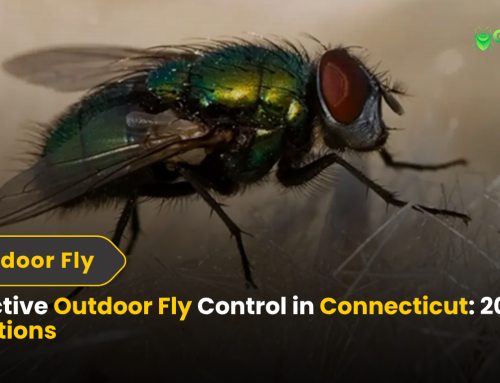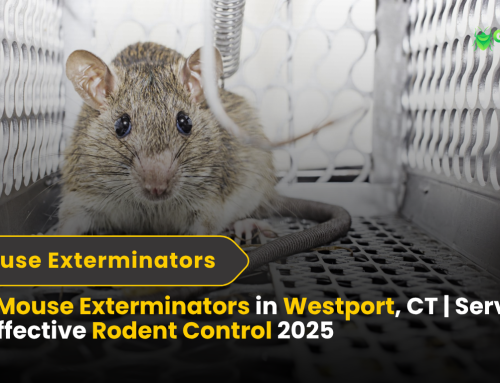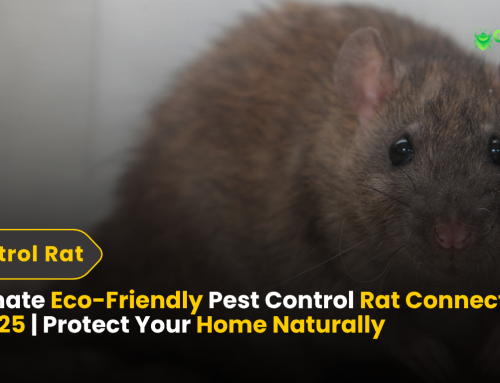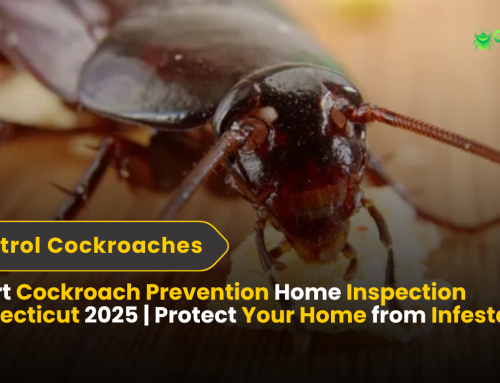Easy, Eco-Friendly Fly Control for Connecticut Residents | Transform Your Home in 2025
Picture this: you’re trying to enjoy a peaceful afternoon in your Stamford backyard, or perhaps you’re hosting a family dinner in your New Canaan home. Suddenly, the familiar, irritating buzz begins. A house fly lands on your food, then on the counter, then on your arm. It’s more than just a nuisance; it’s a potential health hazard buzzing right in your living space. Effective house fly control is not just about comfort—it’s about protecting your family’s well-being.
This comprehensive guide is designed to be your go-to resource for understanding and eliminating these pesky invaders. We’ll dive into everything from why they’re so dangerous to proven DIY methods and, crucially, when it’s time to call in the professionals for expert house fly removal. If you’re a homeowner in Fairfield County, from Darien to Wilton, this is the playbook you need to reclaim your space.
Why Are House Flies Such a Big Problem?
Before we can effectively tackle house fly control, it’s important to understand what we’re up against. The common house fly (Musca domestica) is one of the most widespread insects on the planet, and for good reason. They are incredibly adaptable and prolific breeders.
But the real issue goes far beyond their annoying buzzing.
-
Disease Vectors: House flies are known to carry over 100 different pathogens, including those that cause salmonella, E. coli, and typhoid fever.
-
Contamination: They feed and breed on garbage, manure, and decaying organic matter. Their bodies and sticky feet are covered with thousands of bacteria, which they then track all over your home—landing on your food, preparation surfaces, and even your children’s toys.
-
Rapid Reproduction: A single female fly can lay up to 500 eggs in her short lifetime. Those eggs can hatch into maggots within 24 hours, leading to a full-blown infestation in a matter of weeks.
Common Questions About House Flies
What Attracts House Flies to My Home?
House flies are primarily attracted to three things: food, moisture, and shelter. They have a fantastic sense of smell and can detect odors from miles away. Common attractants include:
-
Uncovered garbage cans or recycling bins.
-
Pet waste left in the yard.
-
Overripe fruit or vegetables on the counter.
-
Spills and food residue, especially sugary or fermented substances.
-
Damp, organic matter like compost piles that aren’t properly managed.
How Can I Tell If I Have a House Fly Infestation?
A few flies here and there are normal. An infestation is a different story. Look for these key signs:
-
Consistently High Numbers: Seeing a dozen or more flies in your home daily is a major red flag.
-
Maggots: The presence of small, white, worm-like larvae in your garbage, compost, or even in damp, hidden areas of your home is a sure sign of active breeding.
-
Dark Clusters of Small Spots: Fly specks (their feces) look like tiny, dark pepper grains and are often found on walls, windowsills, or hanging light fixtures.
What’s the Most Effective DIY House Fly Removal Method?
The most effective strategy is always Integrated Pest Management (IPM), which combines prevention with elimination. While a simple fly swatter can handle a single intruder, a multi-pronged approach is needed for a larger problem. We’ll cover a full step-by-step DIY plan in the next section.
Not All Flies Are Created Equal: Identifying Your Unwanted Guest
While we’re focusing on house fly control, it’s crucial to know that the pest buzzing around your kitchen might not be a common house fly at all. Misidentifying the insect can lead to using the wrong removal strategies, wasting your time and money. In our Connecticut homes, particularly in older, charming houses in Darien or newer constructions in Stamford, you’re likely to encounter a few key culprits. Let’s break them down so you can become a fly identification expert.
1. The Common House Fly (Musca domestica)
-
Appearance: The classic pest. About 1/4 inch long, gray in color with four dark stripes on the thorax, and large red-brown eyes.
-
Habits & Breeding: This is the fly most attracted to human food, garbage, and pet waste. They are strong, direct fliers and are most active during the day.
-
Why it Matters: Correctly identifying this fly means you need to focus your house fly removal efforts on sanitation—securing trash, cleaning up pet waste, and ensuring window screens are intact.
2. The Cluster Fly (Pollenia rudis)
-
Appearance: Often mistaken for a large house fly. They are slightly bigger, darker, and have a distinctive checkerboard pattern of light and dark hairs on their abdomen. Their wings overlap over their back when at rest.
-
Habits & Breeding: Unlike house flies, cluster flies are parasitic on earthworms and don’t breed in garbage. Their most notorious habit is their “overwintering” behavior. In late autumn, they seek shelter in attics and wall voids of homes in Wilton and New Canaan, clustering together by the hundreds. On warm winter days, they may emerge sluggishly into living spaces.
-
Why it Matters: If you see large, slow-moving flies in your home during fall or winter, you likely have a cluster fly issue. Control focuses on exclusion—sealing exterior cracks in the late summer—and potentially an exterior pesticide treatment by a professional to prevent entry.
3. The Fruit Fly (Drosophila melanogaster)
-
Appearance: Very small (1/8 inch), tan or light brown bodies with bright red eyes. They are weak, fluttering fliers.
-
Habits & Breeding: As the name implies, they are drawn to fermenting fruits and vegetables, but also thrive in the film inside drains, beer and wine bottles, and mop buckets.
-
Why it Matters: If your problem involves tiny flies around your fruit bowl or kitchen sink, sanitation is key. Remove overripe produce, clean drains with a biological gel, and eliminate standing moisture.
4. The Drain Fly (Psychodidae)
-
Appearance: Also called “moth flies” due to their small, fuzzy bodies and large, moth-like wings that are held like a roof over their body.
-
Habits & Breeding: These flies breed exclusively in the gelatinous, organic “bio-film” that coats the inside of poorly cleaned drains, sewer lines, and under cracked floor tiles.
-
Why it Matters: Seeing these flies means your drains need a deep cleaning. Pouring boiling water down the drain is not enough and can crack pipes. A professional drain cleaning or the use of specific enzymatic drain cleaners is often required.
A Quick Identification Table:
| Fly Type | Size | Key Identifying Feature | Primary Breeding Source |
|---|---|---|---|
| House Fly | 1/4 inch | Four dark stripes on thorax | Garbage, animal waste, decaying matter |
| Cluster Fly | 3/8 inch | Golden hairs & overlapping wings | Earthworms (in soil) |
| Fruit Fly | 1/8 inch | Red eyes, tan body | Fermenting fruit, sugary residues |
| Drain Fly | 1/8 inch | Fuzzy, moth-like appearance | Scum inside drains & pipes |
Understanding these differences is the first step toward a targeted and effective solution. The methods for house fly removal are very different from dealing with a cluster fly invasion, which is why a proper identification can save you immense frustration.
Your Action Plan: DIY House Fly Control and Prevention
Taking proactive steps is the cornerstone of effective house fly control. Here is a practical, step-by-step guide you can start implementing today.
Step 1: Eliminate Attractants and Breeding Grounds
This is the most critical step. Without food and breeding sites, flies have no reason to visit your home.
-
Secure Your Trash: Use garbage cans with tight-fitting lids. Clean them regularly with a hose and disinfectant to remove residue and odors.
-
Manage Pet Waste: Clean up dog droppings from your yard promptly. If you have a cat, ensure the litter box is scooped daily.
-
Store Food Properly: Keep all food, including pet food, in sealed containers. Don’t leave dirty dishes in the sink overnight.
-
Address Moisture Issues: Fix leaky outdoor faucets and ensure downspouts direct water away from your foundation. Clean out clogged gutters, which can hold stagnant, organic sludge.
Step 2: Fortify Your Home’s Defenses
A fly’s ability to enter your home is its greatest advantage. Take it away.
-
Install and Maintain Screens: Check all windows and doors for tears or gaps. Consider upgrading to finer mesh screens.
-
Seal Entry Points: Use caulk to seal cracks around windows, doors, and where utility lines enter your home. Weatherstripping on doors can close gaps that flies exploit.
-
Practice Door Discipline: Be mindful of open doors, especially during the day. The less time your doors are open, the fewer opportunities flies have to wander in.
Step 3: Deploy Indoor and Outdoor Traps
When prevention isn’t enough, it’s time to trap the existing population.
-
DIY Fly Trap: Create a simple trap using a jar, plastic wrap, and bait (like apple cider vinegar, sugar water, or a piece of rotting fruit). Poke small holes in the plastic wrap. Flies will be attracted by the scent, enter, and be unable to escape.
-
Commercial Traps: UV light traps are effective for indoor use in areas like kitchens and basements. For outdoors, consider bait traps that lure and drown flies.
-
Fly Paper/Strips: While unsightly, these can be highly effective in garages, sheds, or other areas where aesthetics are less important.
Step 4: Use Natural Repellents
For those who prefer a chemical-free approach, several natural options can help.
-
Essential Oils: Flies hate the scent of basil, lavender, eucalyptus, peppermint, and lemongrass. You can make a simple spray by mixing a few drops of these oils with water in a spray bottle and misting around entry points.
-
Herbs and Plants: Growing pots of basil, mint, or lavender near your doors and windows can act as a natural deterrent.
When DIY Isn’t Enough: The Case for Professional House Fly Removal
You’ve sealed the cracks, cleaned the garbage cans, and hung the fly strips, but the buzzing persists. This is a common scenario for many homeowners in our region. So, when should you call a professional?
Consider professional help if:
-
The infestation is severe or keeps coming back.
-
You cannot locate or eliminate the primary breeding source.
-
You suspect the breeding site is in an inaccessible area (like inside a wall void or under a floor).
-
You simply don’t have the time or desire to wage a constant war against these pests.
What to Expect from a Professional House Fly Control Service
A reputable pest control company doesn’t just spray and leave. They perform a thorough, science-based service.
-
Inspection: A certified technician will conduct a comprehensive inspection of your property, both inside and out, to identify the species, locate breeding sites, and understand the factors contributing to the problem.
-
Identification: Correctly identifying the fly species is crucial, as breeding habits can differ. What works for a house fly may not work for a cluster fly or fruit fly.
-
Customized Treatment Plan: Based on the inspection, the professional will develop a targeted plan. This often involves:
-
Applying larvicides to breeding areas to stop the next generation.
-
Using targeted residual insecticides in resting areas (like upper walls and ceilings in garages).
-
Placing professional-grade bait stations and traps.
-
Providing specific, actionable recommendations for you to follow.
-
-
Follow-up and Prevention: Many services offer ongoing maintenance plans to ensure the flies don’t return, which is especially valuable as seasons change here in Connecticut.
Why Local Expertise Matters for House Fly Control in Fairfield County
Pest pressures can vary significantly by region. What works in one part of the country may be less effective here in Fairfield County. A local expert serving Westport, Greenwich, Darien, Stamford, Wilton, and New Canaan understands the local environment.
-
Climate Knowledge: They know how the humid summers and cold winters of New England affect fly life cycles and behavior.
-
Local Breeding Hotspots: They are familiar with common community-level attractants in our specific towns.
-
Rapid Response: A local company can often provide faster service, which is critical when dealing with a rapidly multiplying pest like the house fly.
Pro Tip: The 5-Point Yard Checklist
Before you call a pro, run through this quick local yard checklist. Addressing these can dramatically reduce your fly population.
-
Garbage & Recycling Bins: Are lids tightly sealed and bins clean?
-
Pet Areas: Is pet waste picked up daily?
-
Drainage: Are there any areas of standing water or consistently damp soil?
-
Compost: Is your compost bin sealed or properly turned and managed?
-
Landscaping: Have you recently laid down manure or other organic fertilizers? Are grass clippings and leaf litter cleaned up?
Frequently Asked Questions (FAQ) About House Fly Control
Q1: How long does a house fly live?
A: The typical lifespan of an adult house fly is between 15 and 30 days. However, in that short time, a single female can lay hundreds of eggs, allowing the population to explode very quickly.
Q2: Are the flies in my house coming from the drain?
A: It’s possible, but they are likely drain flies (also called moth flies), not common house flies. Drain flies are smaller, hairier, and have a different wing shape. They breed in the gelatinous gunk that builds up in drains. House flies typically breed in decaying organic matter like garbage or animal feces.
Q3: What is the difference between a house fly and a cluster fly?
A: This is a common point of confusion. House flies are the grayish, general-purpose pests you see buzzing around kitchens. Cluster flies are slightly larger, darker, and have golden hairs on their thorax. Crucially, their behavior is different; they overwinter inside walls and attics, emerging on warm winter days, whereas house flies are active breeders during warm months.
Q4: Are electronic fly zappers effective for house fly control?
A: While they do kill flies, most pest management professionals do not recommend them for house flies. They are more effective at killing harmless or beneficial insects and can actually scatter insect parts and bacteria into the air. Targeted traps and baits are generally a more effective and sanitary option.
Q5: Can I use foggers or “bug bombs” for a fly infestation?
A: We do not recommend foggers for flies. They offer only a temporary knockdown of adult flies you see at that moment and do nothing to address the breeding source (the eggs and larvae). This means the infestation will quickly return. They also pose significant risks if not used correctly and can leave harmful pesticide residues on surfaces.
Q6: Why do I have so many flies in my house all of a sudden?
A: A sudden influx usually indicates a nearby breeding source has matured. This could be a forgotten bag of potatoes in a pantry, a dead animal in a wall void or crawlspace, or a garbage can that wasn’t emptied. Locating and removing this source is the key to solving the problem.
Q7: Is professional house fly removal safe for my pets and children?
A: A reputable pest control company will always prioritize safety. They use products and application methods that are approved by the EPA and are applied in a targeted manner to minimize exposure. Be sure to discuss any specific concerns with your technician beforehand, and they will provide clear instructions for before, during, and after the treatment
Conclusion: Reclaim Your Peace of Mind
Dealing with house flies is a battle on two fronts: prevention and elimination. While the DIY methods outlined in this guide are a powerful first line of defense, some infestations are simply too persistent, too large, or too deeply rooted for a homeowner to handle alone.
You deserve to enjoy your Connecticut home without the constant annoyance and health concerns posed by house flies. If you’re in New Canaan, Westport, Greenwich, Darien, Stamford, Wilton, or the surrounding areas and are tired of swatting, trapping, and worrying, it’s time for a definitive solution.
Don’t let flies take over your home. Contact us today for a free, no-obligation inspection and quote. Our local experts will identify the source of your problem and implement a targeted, effective house fly control plan tailored to your specific property. Reclaim your space—call or click now!










